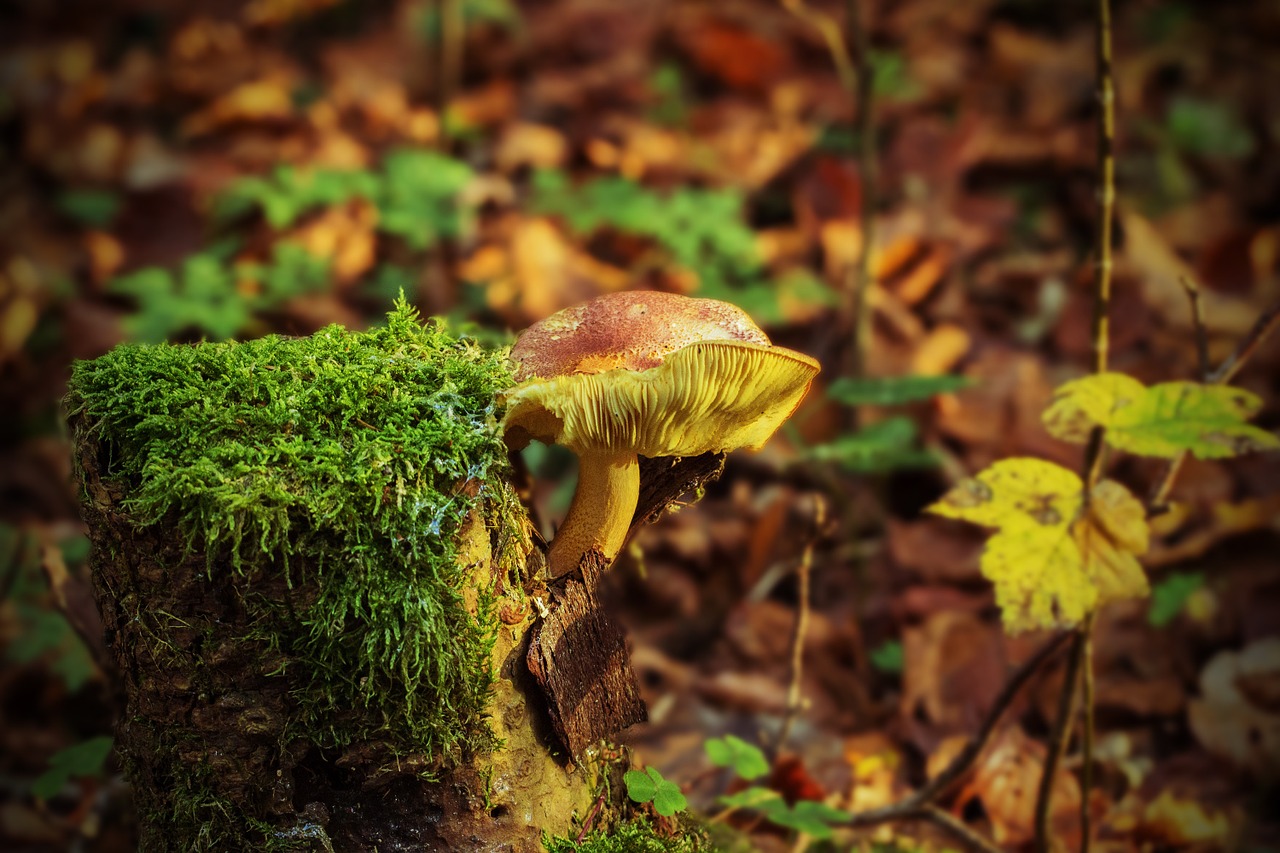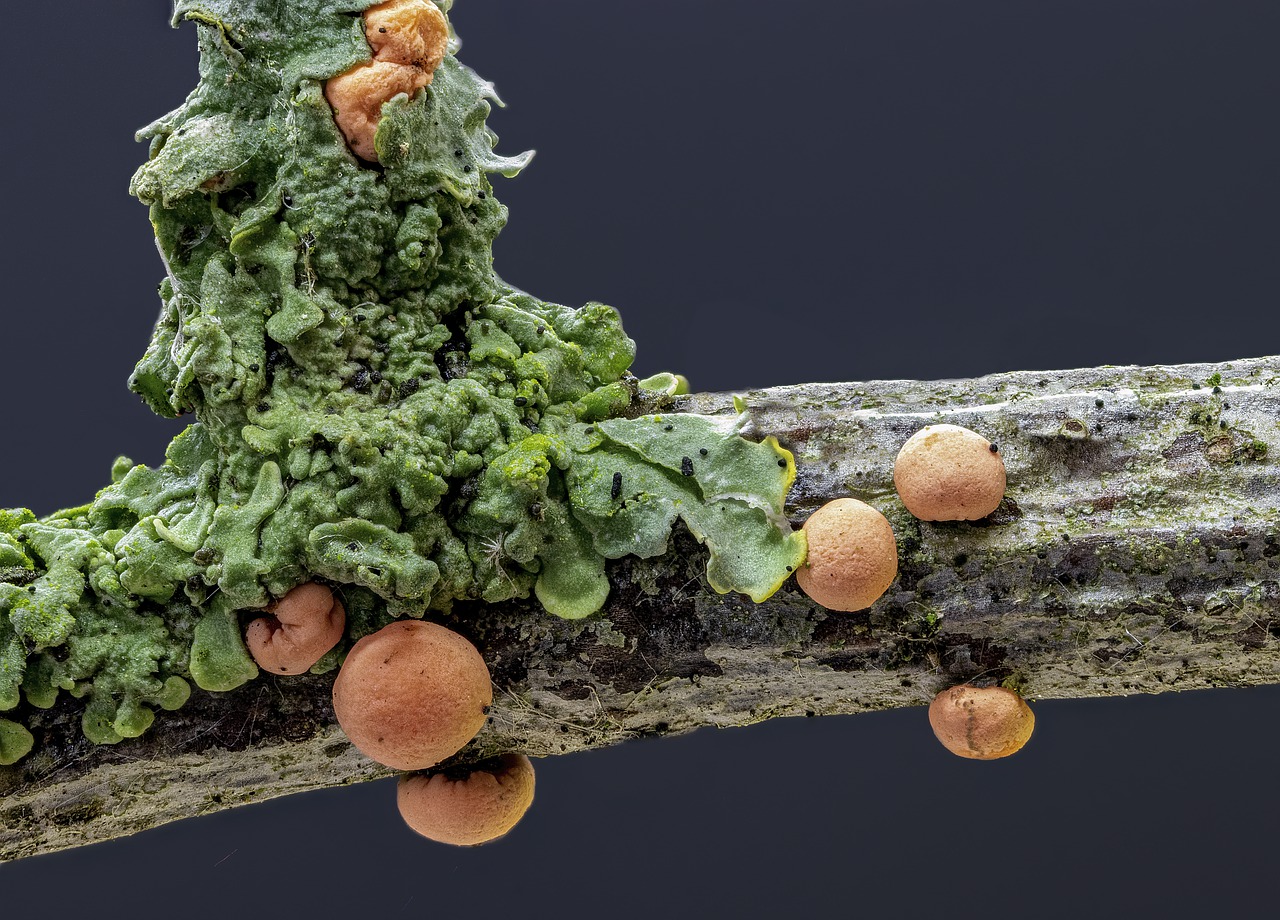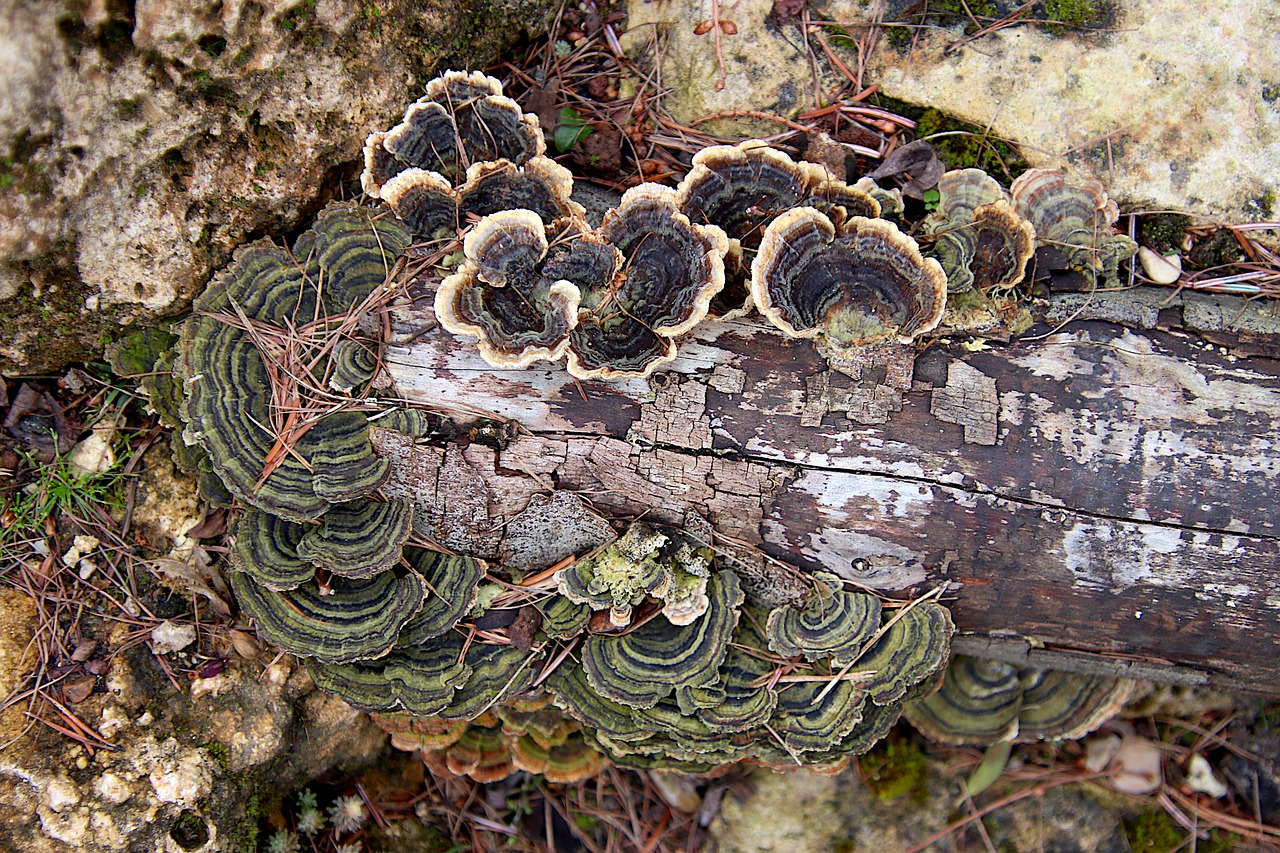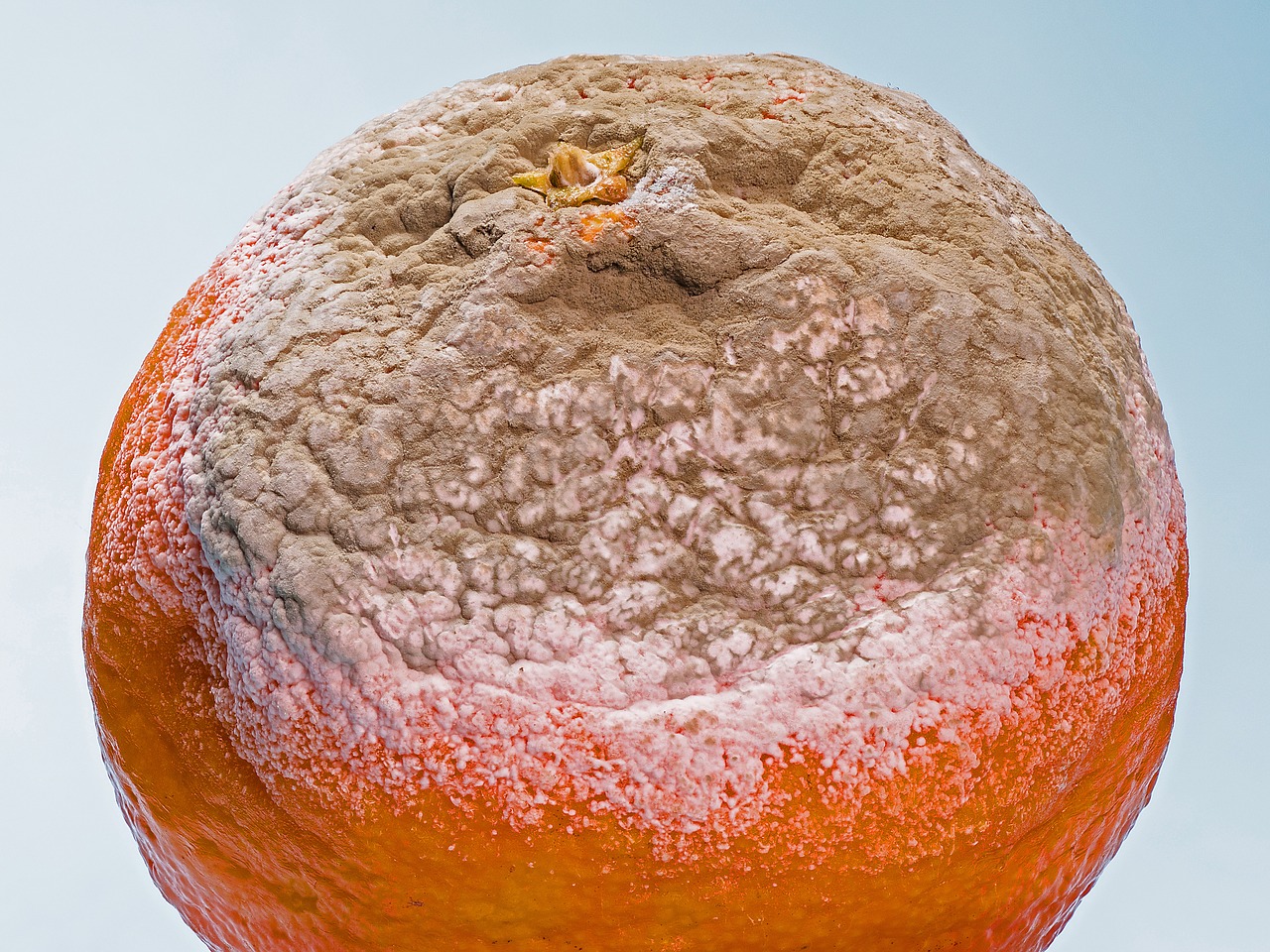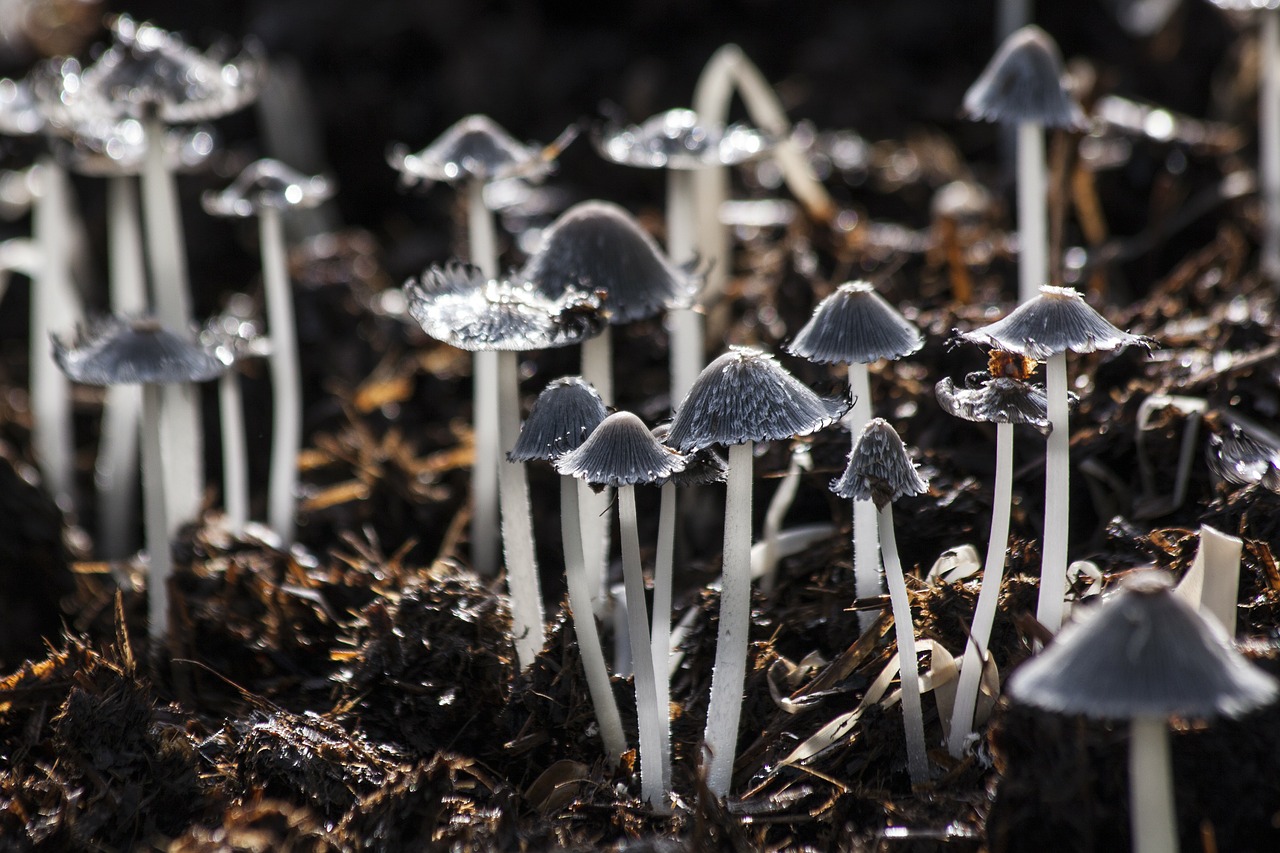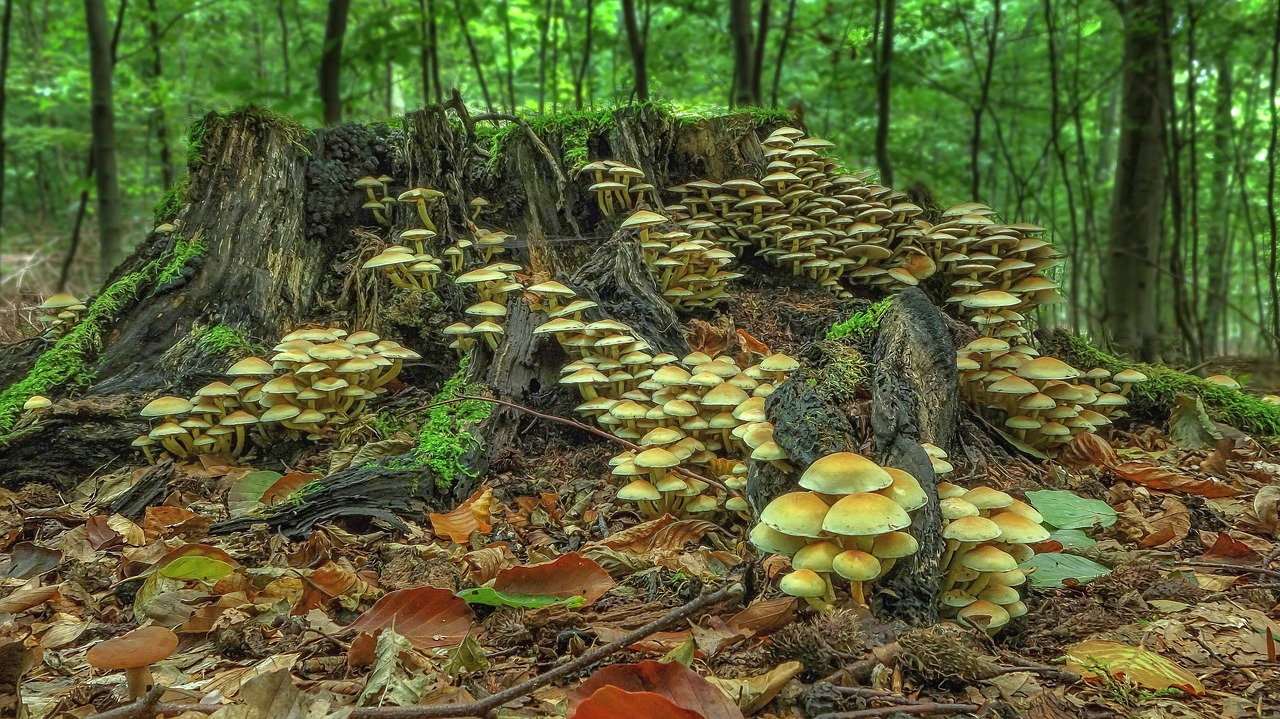Fungi is a common expression used to name the group of eukaryotic beings, which are the main representatives of the Fungi kingdom in the environment. Through this article, we will tell you the different characteristics of fungi.
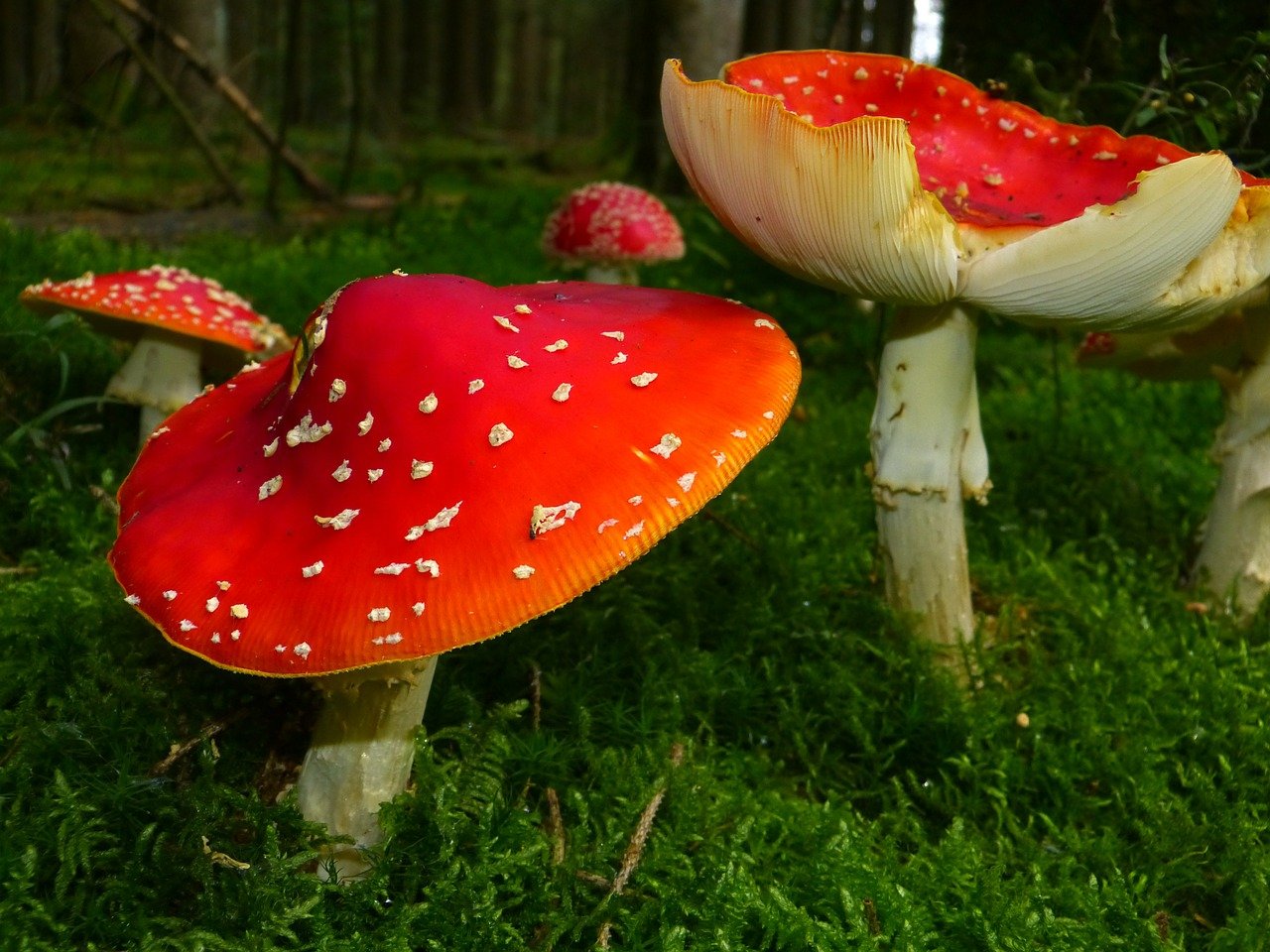
What are Mushrooms?
Fungi are eukaryotic living beings, which do not contain chlorophyll and of which there are approximately 144.000 species of fungi. They are eukaryotic species, which means that they have nucleated cells.
As belonging to the Fungi kingdom, these living beings include moulds, mushrooms and yeasts, which differ from animals and plants in their organic composition.
One of the characteristics of fungi it is that these do not come from the same ancestor, thanks to this condition the experts believe that they are the consequence of a convergent evolution.
Due to the fact that these living beings do not have chlorophyll, they are brownish white, in addition, they have cells with nuclei, which are unicellular and multicellular organisms. It should be noted that chlorophyll is an essential component so that plants can carry out their photosynthesis process, and also be able to feed themselves.
When they are multicellular or multicellular, they can be found in natural environments in plant form, forming cylindrical elements or hyphae, which when they develop become intertwined bifurcations which are called mycelia.
Origin of the Mushrooms
The origin of fungi comes from the separation of other kingdoms of living beings a billion years ago, however, despite the separation that existed in terms of the edge, they still have some characteristics very similar to those of the plant kingdom.
One of the main characteristics of fungi, is that they cannot be moved from one place to another and the shape of their body structure. These living beings also have certain characteristics similar to another kingdom, because their biochemical constitution is similar to that of protists.
These are eukaryotic living organisms, which is why they are in a more current evolved branch, in reference to the prokaryotic organisms of the Monera kingdom and although they resemble plants, they have very striking differences.
We can easily find them in any corner of the world, however, it is necessary to highlight that there are very useful mushrooms from which we can obtain many benefits, while others can be very harmful to human health.
What are the characteristics of fungi and bacteria?
Among the main characteristics of fungi and bacteria, we can find the following:
- They have immobility.
- They lack cellulose and live in moist places.
- They are of different forms and descriptions.
- La Reproduction of fungi It can be asexual or sexual.
- Fungi first digest and then ingest.
- They are saprophytes, they are considered parasites and mutualists.
- There are more than 144.000 species of fungi.
- They feed on the remains of other living things.
- They are grouped within the Fungi kingdom.
- They all have cells with cell walls, which are made of a biopolymer called chitin.
- The lack of chlorophyll deeply affects their way of life, so they do not need light.
- They can be unicellular and multicellular, the latter create mycelia.
- Its role in ecosystems is similar to that of birds of prey or scavengers.
- In symbiosis they can benefit other organisms.
- They can be found in different places on the planet.
- Experts believe that there are approximately 1,5 million types of fungi that have not been identified, where only 5% of them have been described.
Other characteristics of fungi
As we already mentioned, these are very varied and curious species that have many characteristics, both common and individual, but the most important information you should know about fungi is the following:
They are the most diverse creatures
Fungi form a kingdom of great variety, since the Fungi family alone encompasses up to a million species worldwide, however, as mentioned above, the vast majority of these living beings have not yet been studied.
They are a fundamental part of the human diet.
Although it seems strange, there are many species of mushrooms that are edible, due to their large amount of protein and vitamins, in addition to the lack of lipids and carbohydrates, which transform mushrooms into one of the most profitable materials in the diet of humans.
A very common example of this would be the case of yeast which is used to make bread, although there are also mushrooms, among others.
Medicinal properties
Also, these species are used by doctors as they are very useful and effective in applying some treatments for some illnesses, some infections and diseases.
An example of this could be the case of the penicillium genus, from which penicillin arose, which is the basis of all that series of antibiotics that are so much in demand today.
Do hallucinogenic mushrooms exist?
Mushrooms are actually living beings, and being hallucinogenic is one of the characteristics of poisonous mushrooms, of which many produce toxic components, which generate a rapid result in the brain.
This causes hallucinations and loss of consciousness in humans, however, there are some species that can produce more serious effects, since they transmit poisonous enzymes, which can lead to system failure and even death.
Uses given to mushrooms
Fungi are often used by man to make bread, yeast, beer and are also used for the production of alcohol, since they help in the fermentation of wine and to make some kinds of cheese.
They serve for the elaboration of medicines, because thanks to the use of fungi the first penicillins were made, which are capable of eliminating many bacteria responsible for deadly diseases in man.
In addition, mushrooms serve as food for humans, since they have large amounts of nutrients. These species also feed on the waste of other living beings or their own organisms directly, which is why they are rich in nutrients.
Classification of fungi
According to characteristics of phytopathogenic fungi, these can be classified into four large groups, which are mycorrhizal, saprophytic, lichenized and parasitic.
It should be noted that all these species inhabit equally varied environments, although most of them are found in humid, warm climates rich in organic matter to decompose. The Classification of fungi, is the next:
- Mycorrhizal: These are fungi that have a symbiotic relationship with plants, which allows both species to take advantage of climate conditions. Its roots grow and exchange mineral ridges and water as nutrients, which are originated by the fungus in exchange for carbohydrates and vitamins, which are created by plants because the fungus cannot synthesize, since they do not perform photosynthesis.
- Parasites: They are the fungi that grow inside the body of other living beings or implanted on their surface, which feed on the beings they inhabit. Often, they can cause different damages during the feeding process, which can be minor or fatal.
- Lichenized: In the case of lichens, we are talking about symbiotic organisms in which a fungus and an algae come together, as can happen with a cyanobacterium. A close relationship is established and together they manage to provide themselves with moisture and food to generate the necessary conditions for their reproduction and survival, clarifying that if they are separated, they could not exist in the same way.
- Saprophytes: They are the fungi that feed on the decomposition of organic matter that comes from other living beings, which means that this organic matter can be from animal or plant life.
Negative Effects of Mushroom Characteristics
As we mentioned before, some fungi can be harmful to humans, among which we can find dandruff, ringworm, athlete's foot, candidiasis, among others. All because these are fungosis, so they affect and damage the human body by entering it.
In general, these tend to cause more damage in people who have low defenses. To avoid these health problems, fungicides have been found, which are capable of eliminating infectious fungi and completely ending these pests.
It should be noted that it is very important to put an end to fungal pests as soon as possible, because the effects they produce can be very contagious, where they can stay in living beings and feed on them.
The feeding or nutrition of the fungi is through absorption, this occurs because they do not have chloroplasts and cannot be nourished through photosynthesis. They can develop in different climates, however, their preferred temperatures range between 0°C and 55°C, while the fungi that are called opportunists tolerate between 35°C and 40°C.
Taxonomic classification of fungi
At present, at least five representative phyla of the Fungi family have been identified, this is due to the fact that the taxonomic classification of the kingdom is still under study, due to the fact that there are an infinity of species that have not been classified.
According to the phylogenetic studies already carried out, fungi are classified into five large groups, which are the following:
Glomeromycetes
These are the fungi that are distinguished by creating mycorrhizae, which are associated with plants and also have glomerospores. They have a very particular characteristic of forming symbiosis with plants, and in which the oldest and most fossil species are found.
It is called mycorrhizal fungi because they form a mycelium near the rhizome of plants, where the symbiotic society that exists between mycorrhizal fungi and plants occurs between 80% of the plants.
Zygomycetes
Among these fungi are usually the very common molds, while the spores of this group of fungi are called zygospores. Belonging to this group, approximately a thousand species have been studied.
In general, the species belonging to this group of fungi grow in terrestrial places in decomposing matter, like parasites, with which they in turn create symbiotic relationships.
Its reproduction is sexual and asexual, although the most usual way is the second and is carried out when the haploid hyphae approach each other until they meet, so that the fusion of the cytoplasms occurs and consequently the fusion of the nuclei, in this fusion creates the zygospore, which is the reproductive structure of the group.
The zygospores are very strong before unfavorable climatic conditions, they remain in hibernation until the environmental conditions are good for them, then they germinate and a sporangium or vegetative hypha is produced.
This type of mushroom is usually used to make foods, such as tofu and tempeh, in addition, for the preparation of anesthetics, meat tenderizers, food dyes and also industrial alcohols.
Basidiomycetes
They are fungi that show basidiospores and the fruiting body in the form of mushrooms, it is the second group of fungi that have been most studied. The members have different structural forms, which allow them to be placed in different groups of fungi, for that reason, after performing genotype analysis, they are relocated to the Basidiomycota group.
This group of fungi make symbiotic unions with insects, a union that allows them to be hosts or break down substances of specific compounds. Basidiomycetes can be found on tree trunks when they fall to the ground and decompose, especially if they are trees rich in lignocellulose.
ascomycetes
This group of fungi is found within the asci, which are reproductive structures, which contain ascospores, they are described fungi of the Fungi family and in this group a large number of pathogenic species to animals and plants are located, a very visible example of these mushrooms, it's yeast.
The morphology of the mycelium of the fungi that produce this group of fungi, allows filamentous fungi to group together, this situation occurs due to the septa, which are divisions that occur in the hyphae, the reproductive spores appear flattened and agglomerated in sacs called asci.
This type of fungi is used in the medical and agricultural industry, where we mention that the best example is the yeast that is used to make bread, a species that is used in the baking industry to accelerate the fermentation process of the flour to make the bread. bread.
However, there are other types of yeasts that cause diseases, infections and medical pathologies, such as fungi of the genus Candida spp. Filamentous fungi, such as the species of the genus Fusarium spp, cause a lot of damage to the agricultural sector, since they generate losses in many agricultural crops.
For example; Some species of this genus produce mycotoxins in the production of cereals and cause enormous losses, all because this type of fungi causes serious damage to the health of humans, as well as animals.
Chytridiomycetes
Here are all the microscopic organisms of the Fungi kingdom, which have reproductive cells called zoospores or flagellated gametes. They have a very simple organic texture, they live in aquatic places, such as lagoons, streams, estuaries and marine habitats where they can move freely.
They reproduce by spores, which are called zoospores and have a single flagellum, these can remain inactive for a long time, only if the environmental conditions are good.
How do mushrooms reproduce?
The reproduction of fungi is carried out through the manufacture and disintegration of spores, which are strong and withstand difficult natural circumstances.
These spores arise from the fungal sporocarp, meaning the crown that tops the shape of its body. The process of reproduction of fungi can be sexual and asexual, in the way that we explain below:
Sexual
Sexual reproduction requires that there is sympathy between hyphae of the same organism, whether homothallic or heterothallic type, close of the same species or genetically close, in order for hyphae to be identified.
This means that the confluence of the fungi is conditioned by the tuning, which is closely linked to genetics and chemical factors that help the proximity of a compatible hypha.
Asexual
Fungi also reproduce asexually or vegetatively, this way occurs in a large number of fungal species, at some point in their life cycle. This type of reproduction allows to cause growth, which results in the colonization of a particular substrate that already has the genes indicated to survive.
This means that fungal reproduction can be sexual and asexual. Something that has a lot to do with these processes is the climate characteristics, since the spores spread and invade the surrounding environments, and these remain dormant in adverse conditions.
What are called true fungi, such as mushrooms and mycetes, create a fruiting body that people usually know as mushrooms, which can be edible or poisonous.



